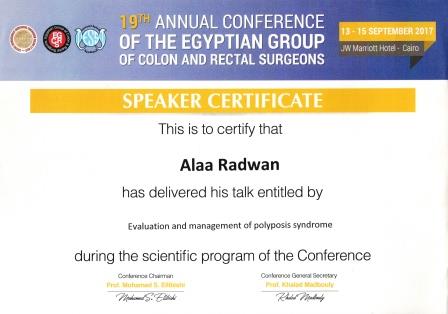Overview
A GI polyp is defined as a mass of the mucosal surface protruding into the lumen of the bowel (see the images below). Polyps can be neoplastic, nonneoplastic, or submucosal. GI polyposis is characterized by multiple polyps within the GI tract.
Preferred examination: The role of the radiologist in the diagnosis and evaluation of intestinal polyposis syndromes cannot be overemphasized, as missed polyps are potentially missed cancers. For polyps larger than 1 cm, the sensitivity of single- and double-contrast barium enema (DCBE) examination is 90-95%. DCBE is more sensitive in the detection of polyps smaller than 1 cm.
When combined with a sodium chloride enema technique, sonography can be used to detect colonic polyps as small as 7 mm in 91% of patients. However, the technique is cumbersome and is not widely practiced. At present, this approach cannot replace a barium enema study or colonoscopy. Still, ultrasonography is an invaluable tool in the screening of patients with polyposis syndromes and in the screening of their families for associated cancers, such as those of the thyroid, breast, liver, ovaries, and uterus.
CT and magnetic resonance (MR) colonography (virtual colonoscopy) are new techniques being developed for the imaging of colorectal polyps and cancer. The limited data presently available show that the sensitivity of both CT and MR colonography for polyps larger than 1 cm is 75-90%; however, the detection rate decreases precipitously for smaller polyps. Both CT and MR colonography allow an analysis in both the cross-sectional and virtual endoscopic formats. New developments, such as fecal tagging, are likely to increase the sensitivity of the techniques, and the noninvasive nature of the procedures increase patient acceptability. CT and MR techniques have the added advantage that both offer the capability of imaging extraintestinal disease associated with many of the colon polyposis syndromes.
Capsule endoscopy (CE) was introduced a decade ago and has since been used in the diagnosis of inflammatory disorders of the esophagus, small bowel and the colon, obscure gastrointestinal bleeding, complicated celiac disease, Crohn disease, and polyposis syndromes. Neumann and associates had reviewed the current applications and future prospects of imaging with CE. CE had proven its efficacy in multiple trials since its introduction nearly 12 years ago. Multiple studies have shown that CE for these interventions is superior to radiologic interventions and push enteroscopy. With positive CE findings, balloon-assisted endoscopy offers the potential to apply targeted biopsies or therapy.


